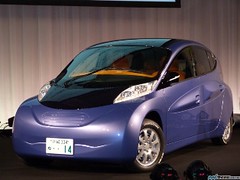 INJECTION MOULDING NEWS
Pairing up to boost EV technology

Tokyo-based SIM-Drive Corp., together with US materials supplier DuPont, has developed a breakthrough in electric vehicle (EV) technology, reducing weight and extending driving range 30% further than today’s mass-produced EV vehicles.
SIM-Drive credits a unique “in-wheel” motor system and extensive use of lightweight materials for the significant increase in kilometers per charge. SIM-WIL also delivers a maximum speed of 180 km/hour, sports car acceleration from 0-100 km/hour in 5.4 seconds and offers a higher level of interior space and comfort.
The interior and exterior enhancements have, in part, been achieved by the use of eight DuPont products including plastics, film, paper and paint in a collaborative development programme between the DuPont Japan Innovation Centre and SIM-Drive.
In EV applications, the high temperature, chemically resistant products and electrical insulation materials contribute to increased EV system reliability and performance under severe conditions such as wide ranging temperatures and high voltage, says SIM-Drive.
DuPont is one of 34 companies to work with SIM-Drive on the prototype SIM-WIL next generation EV vehicle that features nearly 50 new technologies. It was unveiled in March this year.
DuPont’s Zytel HTN PPA is used in the in-wheel motor and Kapton polyimide film in indicator lighting helped SIM-Drive keep weight lower than EVs on the road today. Zytel HTN used in key in-wheel motor bobbins makes them stronger, lighter and more cost effective than the PPS it replaces. Kapton, known for use in high-reliability applications from Mars Rover to mobile devices, replaces the need for a circuit board, shaving 80% of the weight from the lighting component. Biobased Sorona polymer, meanwhile, is said to improve the environmental footprint and is used in interior applications.
DuPont recently invested in several new automotive collaboration facilities in India, China and Korea and this year significantly refreshed facilities in Japan, with upgrades planned for the US and Europe.
|